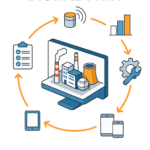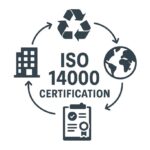
Introduction
In the urgent race to mitigate climate change, innovative strategies such as Carbon Capture and Utilization (CCU), Carbon Capture and Storage (CCS), and Carbon Dioxide Removal (CDR) have emerged as pivotal tools. Each method uniquely addresses carbon emissions, transforming our approach to sustainability and economic growth.
Understanding CCU, CCS, and CDR
CCU involves capturing CO₂ from sources like industrial emissions or directly from the air and transforming it into useful products:
Concrete & Building Materials: CarbonCure (Canada) injects CO₂ into concrete, enhancing durability and storing carbon permanently.
Synthetic Gasoline and Diesel: Carbon Engineering (Canada) produces synthetic fuels from atmospheric CO₂ combined with renewable hydrogen.
Sustainable Jet Fuel (SAF): LanzaJet (USA) synthesizes jet fuel from captured industrial CO₂, adopted by airlines like British Airways.
Methanol & Ethanol: Mitsui Chemicals (Japan) converts CO₂ emissions into valuable methanol for various industrial uses.
Dimethyl Carbonate (DMC): SABIC synthesizes DMC from CO₂, providing sustainable solvents for pharmaceuticals and battery electrolytes.
Plastics & Polymers: Covestro (Germany) uses CO₂ for polyurethane foams (Cardyon®) reducing fossil fuel dependence.
Carbonated Beverages: Climeworks (Switzerland) provides sustainably captured CO₂ for beverages.
Algae-based Biofuels: Algenol (USA) converts CO₂ into algae biomass, producing biofuels and nutritional products.
Carbon Capture and Storage (CCS)
CCS captures emissions and stores them permanently underground in geological formations, like depleted oil fields and saline aquifers, effectively preventing atmospheric CO₂ accumulation.
Carbon Dioxide Removal (CDR)
CDR technologies actively remove CO₂ from the atmosphere, creating negative emissions through methods such as afforestation, biochar, enhanced weathering, and direct air capture (DAC).
Current Trends and Insights
Globally, CCU, CCS, and CDR technologies are scaling rapidly. The global CCU market is forecasted to reach over $4 trillion by 2050, driven by rising demands for sustainable products and strict emission regulations. Countries like Japan, the USA, Germany, and Canada are leading in these innovations.
Strategic Insights and Expert Advice
Integrating CCU, CCS, and CDR into climate strategies is crucial for sustainable development. Experts suggest prioritizing scalability, cost-effectiveness, and long-term carbon storage solutions. Policymakers are urged to support these technologies through subsidies, carbon pricing, and robust regulatory frameworks.
Key Tools, Technologies, and Approaches
CCU: Mineralization, catalytic conversion, synthetic fuel synthesis, biological pathways (algae cultivation).
CCS: Post-combustion capture, pre-combustion capture, oxyfuel combustion, pipeline transport, geological storage.
CDR: Afforestation, biochar incorporation, enhanced mineral weathering, DAC, bioenergy with CCS (BECCS).
Real-World Examples and Case Studies
Norway’s Sleipner CCS Project: Successfully stored over 20 million tonnes of CO₂ since 1996.
Iceland’s Orca DAC Facility (Climeworks): World’s largest DAC plant actively removing CO₂ and storing it underground.
Japan’s Tomakomai CCS Demonstration: Captured and securely stored approximately 300,000 tonnes of CO₂, demonstrating feasibility and safety.
Your Next Step Towards Net Zero
CCU, CCS, and CDR represent powerful strategies necessary to combat climate change. While each has unique strengths and challenges, their combined application can significantly enhance sustainability efforts. Adopting these technologies now positions businesses, communities, and governments for a resilient, sustainable future.
Take Action Now
Ready to drive sustainability and unlock new opportunities in the carbon economy? Contact our team at DEISO for a consultation. Let’s innovate together to achieve your net-zero goals effectively and sustainably. Contact us.
Share this:
- Click to email a link to a friend (Opens in new window) Email
- Click to share on LinkedIn (Opens in new window) LinkedIn
- Click to share on X (Opens in new window) X
- Click to share on Facebook (Opens in new window) Facebook
- Click to share on WhatsApp (Opens in new window) WhatsApp
- Click to share on Reddit (Opens in new window) Reddit
- Click to print (Opens in new window) Print
- More
- Click to share on Tumblr (Opens in new window) Tumblr
- Click to share on Threads (Opens in new window) Threads
- Click to share on Pinterest (Opens in new window) Pinterest
- Click to share on Pocket (Opens in new window) Pocket
- Click to share on Telegram (Opens in new window) Telegram
- Click to share on X (Opens in new window) X










